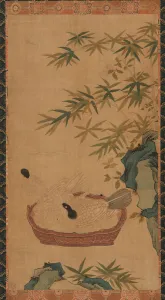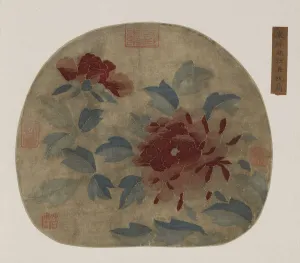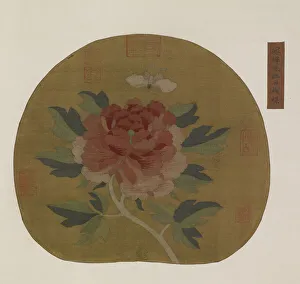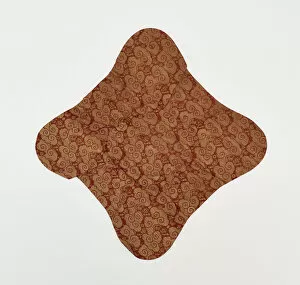Costume And Textile Collection
"Exploring the Richness of Costume and Textile: A Journey Through Time" Step into a world where artistry meets craftsmanship
All Professionally Made to Order for Quick Shipping
"Exploring the Richness of Costume and Textile: A Journey Through Time" Step into a world where artistry meets craftsmanship, as we delve into the captivating realm of costume and textile. From ancient rituals to exquisite tapestries, each piece tells a story that spans centuries. Behold the wrathful deity ritual crown, an awe-inspiring creation from the 19th century. Crafted with silver and gilt copper, adorned with coral and turquoise insets, it emanates power and divinity. Travel back in time to the Ming dynasty with delicate tapestries that depict scenes of nature's beauty. Witness doves bathing in a bowl amidst rocks and bamboos or marvel at vibrant peonies blooming alongside graceful butterflies. The unknown creators have captured fleeting moments frozen in threads. The Qing dynasty presents us with a wall hanging crafted from brocade velvet. Its intricate design showcases skilled hands weaving together patterns that mesmerize the eye. This masterpiece stands as a testament to the creativity of its anonymous creator. Immerse yourself further into history as you explore tapestries depicting five sages enjoying tranquility within a garden under towering pines. These timeless pieces bridge both Ming and Qing dynasties, reminding us of their enduring allure. Ko-ssu tapestries transport us once again to the enigmatic Ming dynasty era. Their origins shrouded in mystery, these works captivate viewers through their intricate details and rich colors - an artistic treasure waiting to be discovered. Even Buddhist monks found inspiration for their garments during Japan's Edo period. A modified mantle transformed into a wall hanging showcases how even functional attire can become an object d'art when placed within this context. Dragons dance across panels from the Ming dynasty; pearls shimmer alongside phoenixes amidst floral patterns – symbols of prosperity, strength, and rebirth intricately woven together by nameless artisans who sought to capture mythical beauty on fabric.

















